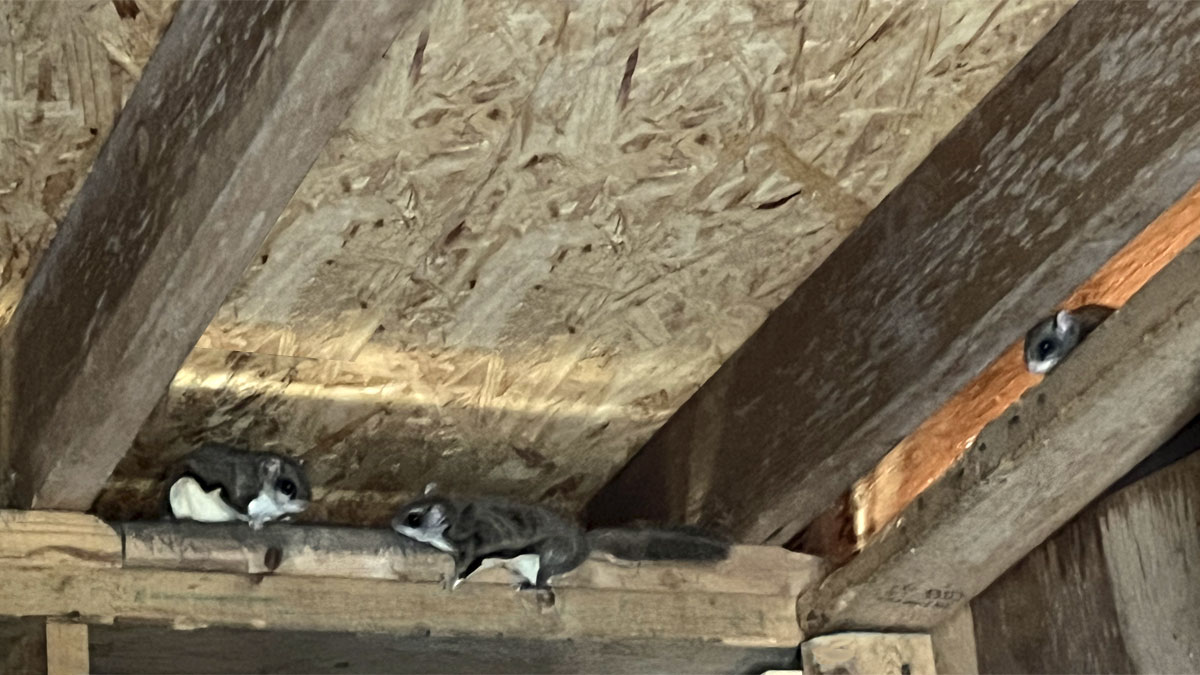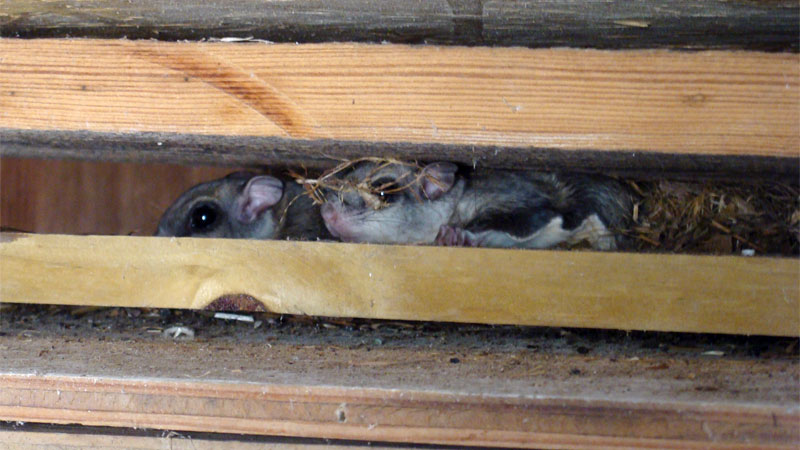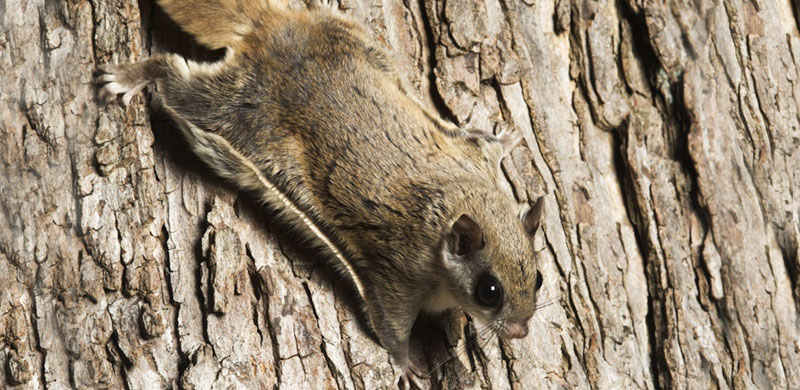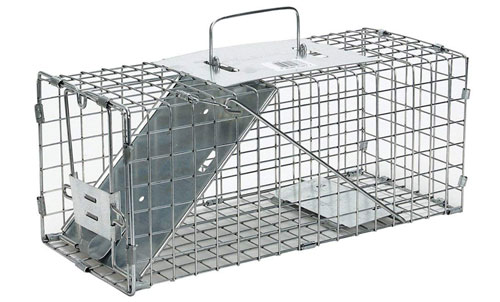Flying squirrels are extremely acrobatic members of the squirrel family, gliding from tree to tree, making 90-degree turns mid-air, and landing with ease. What enables them to do these amazing things is a fleshy membrane of skin that extends from each wrist to each ankle, as well as a long, flattened tail for steering and balance.
Though undeniably cute, flying squirrels are not necessarily the houseguests you want to welcome in the attic or walls of your home (places where they tend to settle if they make their way in).
Keep reading to learn how to effectively get rid of flying squirrels without causing unnecessary harm to these frustrating, yet fascinating creatures.
See Also: How to Get Rid of Tree and Ground Squirrels
Identifying a Flying Squirrel Infestation
Short of actually seeing a flying squirrel entering or leaving an opening in your attic, how do you know what actual critter you’re up against? Here are some signs that you have a flying squirrel problem so that you can take proper removal and exclusion steps.
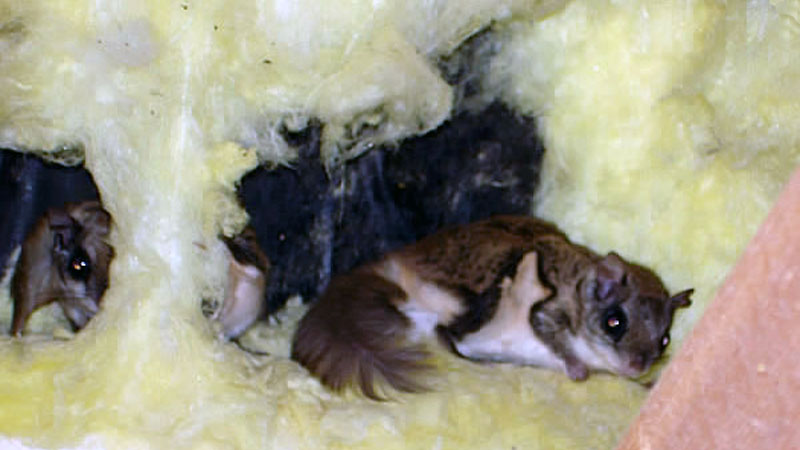
Sounds of Their Activity
You may hear scratching and scurrying noises, especially at night when they are most active, as the sounds of pattering feet, scratching nails, or scampering may occur in walls, ceiling, or along attic beams. The noise increases just after dusk and right before dawn when they depart and return from the nest.
You may also hear high frequency chatter or squeaking as they communicate with others or loud squeaking cries when young flying squirrels are hungry.
But sound alone isn’t going to confirm a flying squirrel. Other common pests found in the attic that also make some of those noises are mice, rats, birds, and racoons.
Droppings
Look for small, dry, brown rice-shaped droppings around 1/8 inch long and pointy on the ends composed of seeds/plant matter that crumbles apart easily.
These droppings gather in small piles along beams, insulation, attic floors but contain no foul odor like rodent droppings. You may see pieces of fur, insect wings, but no white crystalline component indicative of rodent urine.
Nesting Debris
Nesting materials like shredded insulation strewn about, twigs, leaves, pine needles forming loose bundles, and seed shells/husks and eggshell fragments may be spotted in attic spaces or wall voids.
The squirrels use their sharp teeth to tear up soft insulation and scatter it across attic floors and beams while adding natural décor to their nests as well. Leftover remains of the food items they consume also accumulate.
Getting Rid of Flying Squirrels From Your Attic or Walls
If flying squirrels have already accessed your attic or walls, there are a number of humane exclusion and removal methods that can be employed.
#1 – Seal Entry Points and Install Exclusion Door
As with any critter that can makes its way into your home, the most important removal strategy is thoroughly examining the exterior of the house and identifying every possible entry point being used by the squirrels.
Pay close attention around the roofline, eaves, soffits, attic vents, and crawl space vents for any access holes or gaps wider than 1/4 inch. Using hardware cloth, stainless steel mesh, caulk, wood, metal flashing, or other durable materials that cannot be chewed through to plug holes, seal off all entry points except one (the one most commonly used).
On that final entry hole, install a one-way exclusion door like this one unless you’re dealing with a momma squirrel and her babies inside (see note below).
This specialized door uses a spring, plastic flap, or gravity drop method that enables squirrels to exit as normal but the flap then falls closed behind them, denying any re-entry.
Continue to keep the exclusion door in place for several days and replace any food or nesting sources inside to encourage the squirrels to leave through the door. Once you confirm they have exited and been excluded (through lack of sightings or noises), seal the final entry point shut.
Considerations for Squirrel Mothers and Their Young
Since we’re trying to be as safe and humane as possible, special care must be taken to not separate a mother from her dependent young. Depending on the time of year (and type of flying squirrel), you may not want to install that exclusion door until the young are old enough to follow mom outside.
Northern flying squirrels have one litter per year, with young typically becoming independent in August. Southern flying squirrels have two litters, so dependent young may be present from February through October.
Timing is critical—check with a local wildlife rehabilitator for the timing of flying squirrel litters in your area.
Because they are nocturnal, it is difficult to determine when the young are old enough to start following mom on nightly outings. For this reason, one-way doors should only be used during times when it is absolutely certain that no dependent young are present should a one-way door be used on its own.
#2 – Deter With Lights and Sounds
Installing bright lights pointing toward main entry holes being used by the squirrels or an ultrasonic animal repeller tuned to high frequencies near these access points may convince squirrels to leave on their own.
The lights and sounds create an annoying environment that deters flying squirrels and other small mammals from wanting to frequent or nest in an area. For best results, use this method before sealing the final entry point to encourage voluntary departure first.
#3 – Removing Food Attractants
Eliminating any nuts, seeds, berries, pet food, or other food sources around the exterior of the home that may be attracting squirrels will discourage the unwanted guests. Also inspect the attic space for any stored food, seeds, or nuts they could be consuming.
Getting rid of edible attractants indoors and out helps convince squirrels that your property is not ideal habitat for them. Maintaining a clean exterior landscape by trimming shrubs and tree branches can also help. Sure, they’re “flying” squirrels but that’s not their main way of getting around.
#4 – Live Trapping
If exclusion techniques, deterrents, and removing food sources don’t convince the flying squirrels to leave, live trapping may be required. This should be a method of last resort.
Acquire an appropriately sized squirrel trap and bait it with walnuts, pecans, fruit, or nut butter. Place the baited traps in the attic near areas where you have witnessed squirrel activity. Check the traps frequently after setting them.
Once captured, immediately relocate the squirrel at least 5 miles away from your property to avoid having them find their way back. Release near some form of appropriate habitat like a tree-filled park or forested area. Continue trapping until all squirrels observed have been removed.
When to Call a Professional
Although do-it-yourself humane removal methods can be effective for getting rid of flying squirrels, some scenarios call for contacting a professional wildlife control expert for assistance.
Seeking professional help is recommended if:
- The infestation is severe with excessive numbers of squirrels observed. Trapping and excluding over a dozen squirrels on your own poses difficulties. Professionals have more resources and staff to remove large populations.
- Removal attempts fail despite properly sealing most entry points shut and deterrents. Sometimes a few overlooked holes or difficult to access nesting areas prevent complete DIY removal. A wildlife pro may find the culprit openings.
- Squirrel noises and activity resume within days or weeks later indicating reentry. This means there are entrances that need better sealing. Difficult access areas on steep roofs require pro equipment.
- Attic restoration or repairs are needed after removing nests and droppings. Pros can thoroughly sanitize attics and make fixes like insulation replacement.
- You are unable to carry out methods due to physical inability, fear of heights on ladders/roof, or busy schedule. Professionals take over the hands-on work for you.
- Significant structural damage from moisture or gnawing occurs. Professional resources are better equipped for making major repairs.
- In cases of wiring damage, an electrician will need to be called in for repairs.
- How to Identify Skunk Poop (With Pictures) - April 1, 2024
- You Really Don’t Need That Opossum Trap - January 4, 2024
- How to Set a Mouse Trap Without Getting Hurt - December 28, 2023

